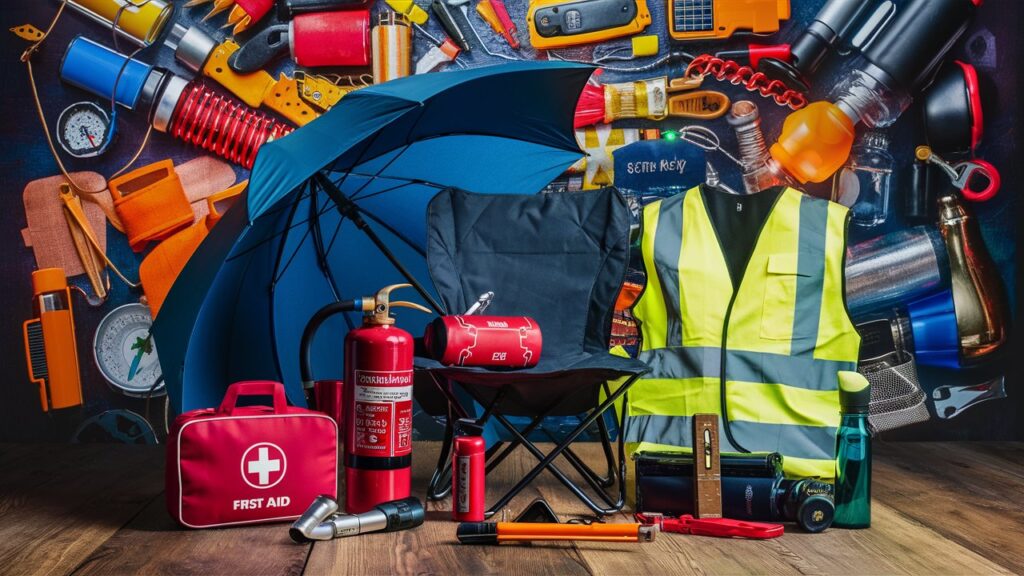In today’s fast-paced world, safety and compliance are paramount concerns for businesses across various industries. The proper utilization of emergency equipment not only ensures the safety of personnel but also ensures adherence to regulatory standards. In this comprehensive guide, we’ll delve into the intricacies of emergency equipment use, focusing specifically on the crucial aspect of the invoice of-286.

Understanding Emergency Equipment Use
Emergency equipment encompasses a wide array of tools and resources designed to mitigate risks and address unforeseen circumstances effectively. From fire extinguishers to first-aid kits, each piece plays a vital role in safeguarding lives and property.
Importance of Emergency Equipment
Emergency situations can arise unexpectedly, making it imperative for organizations to be well-equipped to handle them. Having the right emergency equipment readily available can mean the difference between a minor incident and a full-blown catastrophe.
Types of Emergency Equipment
- Fire Safety Equipment
- Fire Extinguishers
- Fire Blankets
- Smoke Detectors
- First-Aid Kits
- Bandages and Dressings
- Antiseptic Solutions
- CPR Masks
- Emergency Lighting
- Exit Signs
- Emergency Exit Lights
- Flashlights
- Safety Gear
- Hard Hats
- High-Visibility Vests
- Safety Goggles
The Significance of Invoice of-286
The invoice of-286 serves as a vital document in the realm of emergency equipment management. It provides a detailed account of the equipment used during emergencies, facilitating accountability and compliance with regulatory requirements.

Components of Invoice of-286
- Itemized List of Equipment
- Description of Each Item
- Quantity Used
- Serial Numbers (if applicable)
- Date and Time of Use
- Records the Incident Timeline
- Helps in Incident Analysis
- Personnel Information
- Names of Individuals Involved
- Designations or Roles
Best Practices for Emergency Equipment Use
Ensuring the effective utilization of emergency equipment requires adherence to established best practices. By following these guidelines, organizations can maximize safety and minimize risks.
Regular Inspections and Maintenance
Routine inspections and maintenance are essential to ensure that emergency equipment remains in optimal condition. This includes checking for expiry dates, testing functionality, and replacing any faulty components.
Employee Training and Awareness
Proper training and awareness programs empower employees to respond swiftly and effectively during emergencies. Conducting regular drills and providing comprehensive training sessions can significantly enhance preparedness levels.
Documentation and Record-Keeping
Maintaining accurate records, including invoices of-286, is crucial for regulatory compliance and accountability. Organizations should establish robust documentation practices to track the usage and condition of emergency equipment.
FAQs (Frequently Asked Questions)
- How often should emergency equipment be inspected?
- Emergency equipment should be inspected at regular intervals as per regulatory guidelines, typically every 6 months to 1 year.
- Can expired emergency equipment still be used?
- No, expired emergency equipment should be promptly replaced to ensure optimal performance during emergencies.
- What should be included in an emergency equipment use invoice?
- An emergency equipment use invoice should include a detailed list of equipment used, date and time of use, and personnel information involved.
- Is employee training mandatory for emergency equipment use?
- Yes, employee training is mandatory to ensure proper utilization of emergency equipment and swift response during emergencies.
- How can organizations ensure compliance with regulatory standards regarding emergency equipment?
- Organizations can ensure compliance by conducting regular audits, maintaining accurate documentation, and providing ongoing training to employees.
- What are the consequences of non-compliance with emergency equipment regulations?
- Non-compliance with emergency equipment regulations can lead to hefty fines, legal liabilities, and, most importantly, increased risks to personnel safety.
Conclusion
In conclusion, the effective use of emergency equipment, coupled with meticulous documentation such as the invoice of-286, is indispensable for ensuring safety and regulatory compliance in various settings. By adhering to best practices and fostering a culture of preparedness, organizations can mitigate risks and protect lives.




